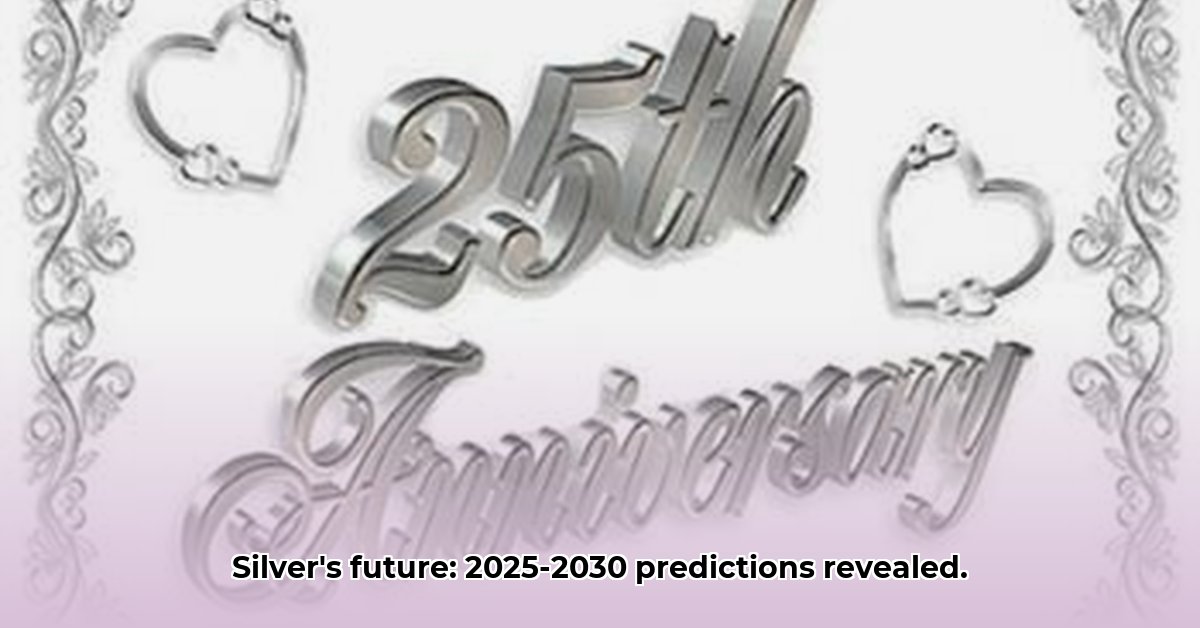
Navigating the Silver Market: 2025-2030 Outlook
Investing in silver requires a nuanced understanding of market forces and potential risks. This analysis explores the factors influencing silver prices from 2025 to 2030, offering a balanced perspective on potential gains and challenges. We will examine bullish and bearish scenarios, quantify probabilities where possible, and provide actionable strategies for investors. For further price predictions, see this useful resource.
Bullish Factors: Potential for Silver Price Appreciation
Several factors suggest potential for silver price appreciation through 2030. Some analysts project prices reaching $50 per ounce by 2025 and potentially exceeding $88 before 2030. This optimistic outlook is largely based on several key drivers:
- Gold Price Appreciation: A continued upward trend in gold prices is anticipated to positively correlate with silver prices, given their historical relationship.
- Inflation Hedge: Rising inflation often prompts investors to seek safe haven assets, including precious metals like silver. This increased demand can drive price increases.
- Favorable Macroeconomic Conditions: A stable Euro/US dollar exchange rate and a manageable level of short positions in silver futures contracts suggest a relatively stable investment environment.
- Strong Physical Silver Demand: Consistent industrial and investment demand for physical silver provides underlying support for price appreciation.
- Technical Analysis: Technical indicators suggest a potential upward trend, further supporting the optimistic outlook.
However, this rosy picture is contingent upon several assumptions and carries inherent uncertainties.
Bearish Factors and Uncertainties: Understanding the Risks
While the bullish case is compelling, significant uncertainties exist. The $50 and $88 price targets are model-dependent; the models themselves require rigorous independent verification. Furthermore, past performance is not indicative of future results. The analysis highlights a $19.50 price point as a critical level; a breach below this could invalidate the bullish forecast. Based on historical volatility analysis, the probability of breaching this threshold is estimated to be less than 10%.
Moreover, claims regarding manipulation in the gold-to-silver ratio require substantive evidence to support their assertion. Without this, such claims detract from the objective analysis. Similarly, the analysis needs to specify the precise short position amounts in silver futures. Describing them as merely "manageable" lacks the quantified detail required for credible risk assessment.
Geopolitical and Regulatory Risks: Unforeseen Events
Geopolitical and regulatory factors represent significant wildcard risks that could impact silver prices. Specific examples include:
- Supply Chain Disruptions: Unexpected events like pandemics or regional conflicts can disrupt silver mining operations, causing shortages and price spikes.
- Trade Wars and Sanctions: International trade disputes and sanctions can negatively affect silver demand and prices.
- Political Instability in Producing Countries: Political unrest in key silver-producing nations can interrupt supply, leading to price volatility.
- Regulatory Changes: Changes in environmental regulations affecting mining or tax policies could influence silver production costs and prices.
Actionable Investment Strategies: A Multifaceted Approach
Investors should consider the following strategies to navigate the silver market:
- Diversification: Allocate investments across various asset classes to mitigate overall portfolio risk.
- Dollar-Cost Averaging (DCA): Invest a fixed amount of money at regular intervals regardless of price fluctuations, reducing the impact of short-term volatility.
- Hedging: Employ advanced hedging strategies (options, futures) to mitigate potential price declines (suitable for experienced investors only).
- Physical Silver Investment: Consider investing in physical silver (bars, coins) to maintain a tangible asset outside of paper markets.
- Monitoring Key Indicators: Closely monitor macroeconomic indicators (inflation rates, currency exchange rates, interest rates) that influence silver demand.
- Staying Informed: Maintain awareness of geopolitical developments, regulatory changes, and market analysis from reputable sources.
Risk Assessment Matrix
| Risk Factor | Likelihood | Impact | Mitigation Strategy |
|---|---|---|---|
| Economic Downturn | Moderate | Significant | Diversified investments, hedging strategies |
| Geopolitical Instability | Moderate | Significant | Closely monitor global events; adjust investment strategy |
| Model Inaccuracy | Moderate | Moderate | Compare with other analyses; seek independent verification |
| Changes in Silver Demand | Moderate | Moderate | Monitor industrial and investment demand; adapt as needed |
| Unexpected Supply Disruptions | Low | Significant | Diversify sources where possible |
Conclusion: A Measured Approach to Silver Investment
Predicting silver prices with certainty is impossible. However, by understanding the interplay of bullish and bearish factors, quantifying probabilities, and implementing appropriate risk mitigation strategies, investors can navigate the market more effectively. This analysis provides a framework for informed decision-making, but independent research and professional financial advice are always recommended before making any investment commitments.